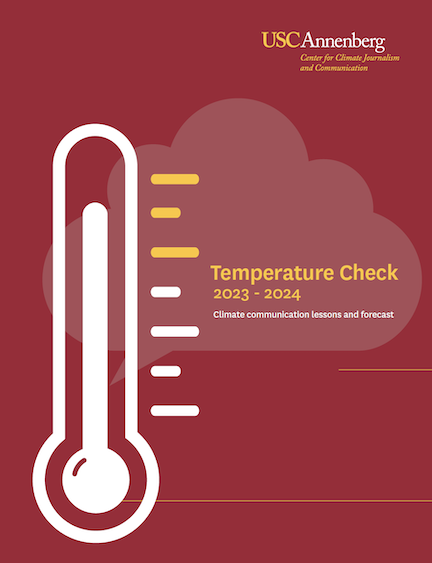Climate communication unfolds in a space where urgency meets clarity, yet the bridge between message and action remains fragile, even unsteady. Our Temperature Check reveals the obstacles that remain, including complexity, misinformation, and apathy. However, beyond these challenges lie possibilities that require reimagining both strategy and responsibility. We understand that the precision of language can reshape public engagement in ways that resonate deeply and spur action.
The climate story moves with or without us. Headlines construct frameworks for transformation, yet often those frameworks lack foundations for action. National media continues dominating the conversation, despite local news being more trusted – 0% of respondents cited local media as their primary news source. I believe this gap reveals a missed opportunity to transform abstract global concerns into tangible local realities. Communicators have the power to fill this void and rebuild trust through narratives that resonate on a community level.
Personally, I discovered something fascinating about message resonance. Like that iconic SNL sketch where Christopher Walken prescribes Will Ferrell to play “more cowbell” to cure Blue Öyster Cult’s fever, sometimes the most impactful element in communication isn’t the obvious one. The cowbell – dismissed, underestimated, even ridiculed – became the very thing that transformed a good song into a cultural touchstone. Similarly, in climate communication, we often overlook the power of unexpected messaging approaches that could cut through the din and connect with audiences in memorable ways.
Respondents cite complexity as their greatest barrier, with 44.82% noting that the intricate nature of climate issues makes them difficult to communicate. This does not imply the need for simplification, but rather a need for focus. Danielle Venton of KQED observed that the conversation around climate should shift from “sacrifice to save the world” to “getting excited for the better products and solutions that will improve life and also save the world.” This insight demonstrates how reframing complexity as an opportunity for innovation makes the message resonate more deeply.
Moreover, impact should never focus solely on impressions. 45.99% of respondents measure success through policy shifts, legislative action, and societal change. Every message can become an instrument for advocacy. The term ‘audience’ has now become outdated as it insinuates institutions should be on stage as others listen. Today, the roles have reversed. Audiences move from passive observers to participants, even taking center stage, now requiring climate leaders to become active listeners able to communicate with purpose built into every phrase.
Through our Temperature Check project, we learned that finding this resonance isn’t about having the loudest voice or the most complex analysis – it’s about finding that perfect “cowbell moment” where message meets audience in unexpected yet powerful ways. Sometimes it’s a local story that cuts through national noise, other times it’s a fresh perspective that transforms how people see climate solutions.
Misinformation creates fog, but communicators clear it with precision, not simplification. Each message builds to remove barriers, and to create urgency and pathways for action. Communication constructs the world it speaks into existence. What we learned seems simple – how we approach discussions around climate change holds the momentum of action. Each message carves a space for change, not through force, but through presence. Complexity does not obscure; it reveals the edges where clarity takes hold.
Climate communicators face an evolving landscape. As traditional newsrooms contract, specialized climate journalism expands. This shift underscores the growing recognition of climate change as the defining narrative of our era. Yet, it also highlights the precarious nature of journalism in the digital age. Philanthropic support emerges as a vital lifeline, though questions linger about long-term sustainability.
Cross-sector collaboration emerges as a crucial strategy to overcome these challenges. Academia, journalism, and philanthropy must unite, pooling their resources and expertise to forge innovative approaches to climate communication. This collaboration can help address the complexity barrier, combat misinformation, and develop more effective ways to engage diverse audiences.
Climate communication thrives on complexity, not despite it. Each facet of climate change offers a unique entry point, drawing people into the conversation. Our greatest challenge – and our greatest strength – lies in how we tell these stories. When we embrace the full depth of the challenge, we create connections that endure. The future rests on how precisely and powerfully we communicate, embedding urgency into every word and shaping a shared purpose that moves us all forward.
Michael Kittilson works as a Research Assistant at the Center for Climate Journalism and Communication.
